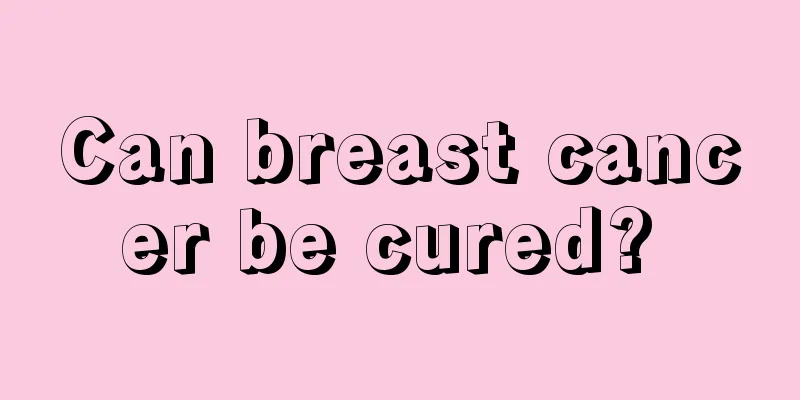How to quickly treat hamartoma

|
Although hamartoma is not a malignant tumor, it is still very harmful. If it is not treated in time, some difficult-to-cure complications will occur, which will endanger our health. We should go to the hospital for diagnosis and treatment as soon as possible. Here I will introduce to you how to quickly treat hamartoma: Hamartoma is a substantial space-occupying lesion, a type of lipoma, composed of thick-walled blood vessels, smooth muscle and mature adipose tissue, and can occur singly or multiple times. Usually, B-ultrasound and CT examinations have a high positioning and qualitative diagnosis rate for hamartomas. Although hamartomas are benign, they must be surgically removed. Only the pathological diagnosis after surgery is accurate. Although it does not metastasize in the near future, it may turn into cancer and is constantly destroying normal organ tissues. Having an extra abnormal thing in the body is also a psychological burden, so surgery is necessary. Renal hamartoma, also known as renal angiomyolipoma, is a benign tumor composed of abnormally proliferating blood vessels, smooth muscles and adipose tissue in different proportions. The disease can occur not only in the kidneys, but also in the brain, eyes, heart, lungs, bones and other parts. The disease is very harmful to the patient's body, so it needs to be treated as soon as possible after diagnosis. What should I do if I have a hamartoma? 1. Observation: Oesterling believed that tumors <4 cm can be left untreated, but close follow-up is required. Johns Hopkins reported a group of 35 cases, some of which did not continue to grow for many years. Steiner advocated that patients <4 cm should be followed up once a year even if they are asymptomatic; patients >4 cm should be followed up once every six months if they are asymptomatic or have mild symptoms. 2. Embolization: Arterial embolization should first be considered in cases of bleeding. According to experience, the volume of the tumor does not decrease after embolization, but the bleeding can be stopped. Superselective renal artery branch embolization is often used to protect some renal function. 3. Nephron-sparing surgery: Tumors <5cm can be enucleated, especially those at the edge of the kidney. However, some tumors have unclear capsules, irregular shapes, and unclear interfaces, making enucleation unsafe. In this case, partial nephrectomy can be performed. 4. Surgical treatment: The procedure of preserving renal tissue, which we call partial nephrectomy, can not only completely remove the tumor, but also preserve renal tissue and protect renal function to the maximum extent. It has a very good long-term effect and is very meaningful for the treatment of renal hamartoma (including cases of partial rupture and bleeding). Partial nephrectomy is divided into open surgery and laparoscopic surgery. According to the current medical level, laparoscopic surgery is recommended as the first choice. It not only has less trauma and completely removes the tumor, but also can retain pathology to confirm the nature of the tumor. In recent years, laparoscopic surgery has gradually become the preferred method for the treatment of renal hamartoma with its unique advantages such as less trauma, fast wound healing, short hospitalization time, less bleeding and beautiful incision. 5. Kidney transplantation or hemodialysis: Only applicable to patients who must undergo bilateral nephrectomy due to bilateral lesions leading to renal failure or tumor rupture and bleeding. 6. Interventional embolization: Generally speaking, interventional embolization is simple and safe, but some scholars believe that this treatment is not thorough and cannot guarantee complete blockage of the blood supply to the hamartoma, so there is a possibility of secondary embolization or conversion to surgical treatment. However, it is a good first aid method for ruptured bleeding. Unilateral renal angiolipoma is a benign lesion with a good prognosis. For patients with bilateral or multiple lesions and renal insufficiency, their quality of life will still be affected despite conservative treatment. For a few cases where multiple organs are invaded, such as lymph nodes, brain, heart, or even tumor thrombi invade blood vessels, the prognosis depends on the condition of the invaded organs. |
<<: What method is suitable for treating hamartoma
>>: Best treatment for hamartoma
Recommend
What is the anticoagulant treatment for venous thrombosis?
Anticoagulation therapy for venous thrombosis is ...
How to conduct bone cancer examination
How to conduct bone cancer examination? There are...
Is it okay to sleep with your head facing east and your feet facing west?
Because of the importance of sleep, how to sleep ...
What are the main causes of lung cancer
Is it so easy to detect lung cancer in its early ...
How is prostate cancer classified
For diseases like prostate cancer, many people do...
The shape of your nails determines what kind of sports are suitable for you
Exercise is not only good for physical health, bu...
Is it better to wash your hair at night or in the morning? Blow-drying is crucial
There is no scientific conclusion on whether it i...
Nursing measures for postoperative infection of endometrial cancer
We all know that endometrial cancer is a serious ...
Why do I feel stuffy in my chest and choke when eating?
I believe many people are familiar with the situa...
What can men eat to improve their sexual function
A man's physical health is not only reflected...
Liver cancer symptoms
Liver cancer is a common malignant tumor in the d...
What is the correspondence between the spinal cord and the vertebrae?
The human spinal cord is a relatively sensitive a...
What should I do if the skin on the outside of my little toe is thick, swollen and painful?
Toes and fingers are completely different parts b...
Is it useful to soak your feet in vinegar?
People who suffer from athlete's foot should ...
The difference between lymph nodes and lymphoma
My aunt has not been in good health recently, esp...









